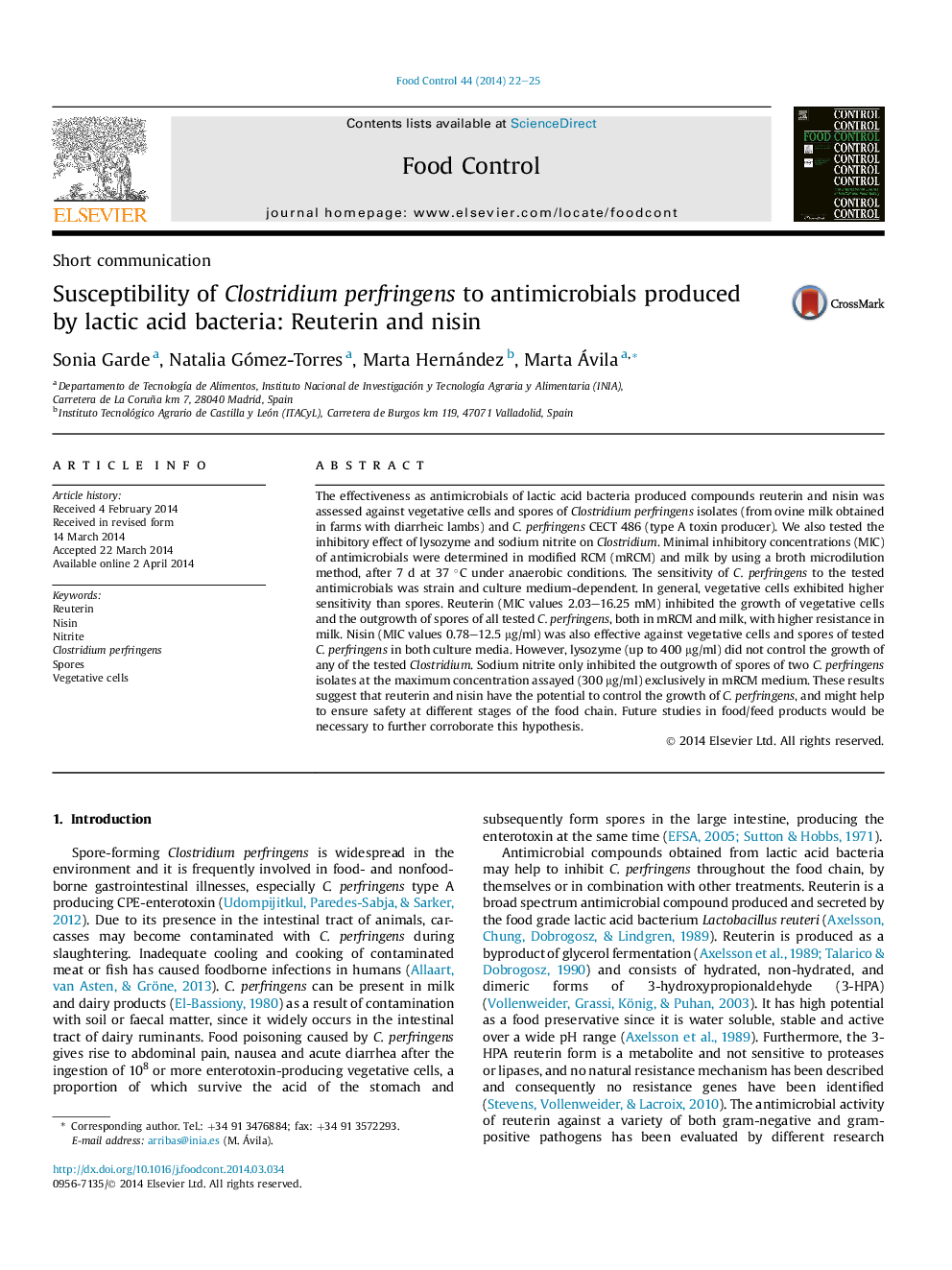| Article ID | Journal | Published Year | Pages | File Type |
|---|---|---|---|---|
| 4559332 | Food Control | 2014 | 4 Pages |
•Type of bacteria cell and growth media influence C. perfringens susceptibility to antimicrobials.•Reuterin and nisin inhibited the growth of vegetative cells and spores of all tested C. perfringens.•Lysozyme (up to 400 μg/ml) did not control the growth of any tested Clostridium.•Sodium nitrite had limited inhibitory effect against tested C. perfringens.
The effectiveness as antimicrobials of lactic acid bacteria produced compounds reuterin and nisin was assessed against vegetative cells and spores of Clostridium perfringens isolates (from ovine milk obtained in farms with diarrheic lambs) and C. perfringens CECT 486 (type A toxin producer). We also tested the inhibitory effect of lysozyme and sodium nitrite on Clostridium. Minimal inhibitory concentrations (MIC) of antimicrobials were determined in modified RCM (mRCM) and milk by using a broth microdilution method, after 7 d at 37 °C under anaerobic conditions. The sensitivity of C. perfringens to the tested antimicrobials was strain and culture medium-dependent. In general, vegetative cells exhibited higher sensitivity than spores. Reuterin (MIC values 2.03–16.25 mM) inhibited the growth of vegetative cells and the outgrowth of spores of all tested C. perfringens, both in mRCM and milk, with higher resistance in milk. Nisin (MIC values 0.78–12.5 μg/ml) was also effective against vegetative cells and spores of tested C. perfringens in both culture media. However, lysozyme (up to 400 μg/ml) did not control the growth of any of the tested Clostridium. Sodium nitrite only inhibited the outgrowth of spores of two C. perfringens isolates at the maximum concentration assayed (300 μg/ml) exclusively in mRCM medium. These results suggest that reuterin and nisin have the potential to control the growth of C. perfringens, and might help to ensure safety at different stages of the food chain. Future studies in food/feed products would be necessary to further corroborate this hypothesis.
